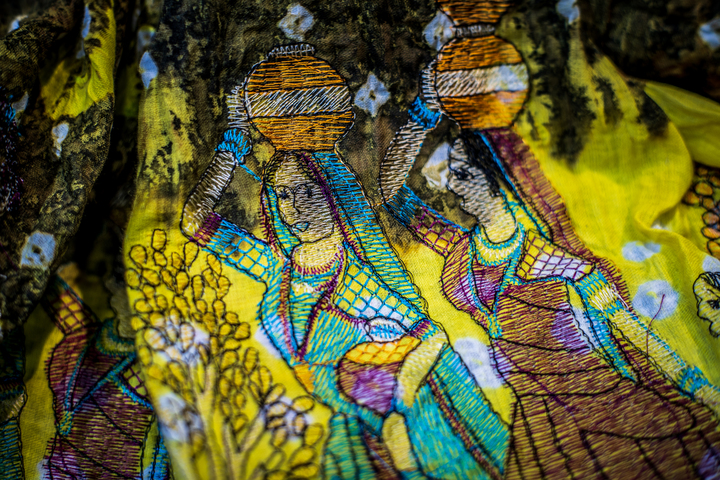On August 30, 2024, a federal judge in the U.S. District Court dismissed a lawsuit brought by an Indiana couple claiming that the teaching of evolution in public schools violates the Constitution. This decision follows over a year of hearings and adds to a series of legal challenges that highlight the ongoing tensions between science and religion in American education.
According to Law & Crime, Jason and Jennifer Reinoehl sued the Penn-Harris-Madison School corporation, the Indiana State board of Education and the Indiana Secretary of Education in May 2023, alleging that the defendants were blameworthy in “forcing” their children “to learn and cite [evolution] as true religious origin stories that were different from those in which they believe in.”
Throughout the 35-page complaint, the Reinoehls contended that the Indiana district schools teach the state-sponsored “religious myth of evolution,” and argued that evolution has still yet to be proven and on that basis attacks the Judeo-Christian origin story.
According to the plaintiffs, evolution is a “highly flawed scientific theory” that does not meet the proper criteria for scientific hypothesis and has been “scientifically disproven.” Over multiple pages, the Reinoehls argued that there is no way to test the theory of evolution, just as there is no way to test the Big Bang Theory. Scientists, they said, subscribe to evolutionary theory because they “have been indoctrinated with it while attending public schools and universities.”
Ultimately, 81-year-old Senior U.S. District Judge Sarah Evans Barker made quick work of the Reinoehls’ complaint and granted the defendants’ motion to dismiss. Barker ruled that whatever similarities exist between evolutionary theory and atheism, the teaching of evolution does not violate the Establishment Clause of the First Amendment.
Historically, science and religion have often appeared at odds with one another. Claudia Andrade, Lick-Wilmerding High School Biology and Anthropology Teacher, recalls the prominence of speakers like Bill Nye and Richard Dawkins on talk shows in the 1990s, and the ways these appearances often framed science and religion in opposition, a dynamic she believed many programs exploited to boost ratings and viewership. “There’s no listening on either side. There’s never any understanding of what the other side is talking about, nor is there ever a respect for one another,” she said.
With over 25 years of experience in studying and teaching anthropology, Andrade has observed the ongoing debates between science and religion. In her classroom, she strives to emphasize the joy of discovery in anthropology and to illustrate the potential for balance between scientific inquiry and personal faith. “I love teaching evolution, I love it. It’s so empowering,” she said.
Andrade shared that she tries very hard in her curriculum to be as accurate and up to date in the science as possible for her students. At the same time, she acknowledges the significance of the religious beliefs that many students hold and values their importance in the learning environment. “Learning evolution and human evolution in particular, does not mean that you have to change who you are. It just means you know the science and you can explore the joys of it,” Andrade said.
Jason Seto, Christ the King Parish Middle School Youth Ministry Creator and Co-Leader, similarly respects the value of both science and faith and its presence in education. As a devout practical Catholic, growing up Seto was exposed to both scientific evolution and creationism. In fact, he shared that while his public school education never spoke about creationism more than merely mentioning its presence, his religious teachings often covered evolution and welcomed scientific research and discussion on the theory of evolution. While accepting this possibility however, Seto emphasizes that the Church still upholds the theological belief that the human soul is a direct and immediate creation from God, not a product of evolution.
While Seto holds his religious beliefs closely, he has also explored the world of science through his education. In college, he took an anthropology course, and while some classmates dropped it due to conflicts with the professor’s views, Seto never saw his relationship with and views of science and religion deteriorate or decline.
“I grew in amazement of the fossils of the great apes and the timeline of primates. While holding to my theological beliefs to the papal teachings of Pius XII and John Paul II, I felt more than comfortable to explore and learn more about the scientific theory of evolution without fear of my convictions preventing me from doing so,” Seto said.
Today, as a youth minister, educating middle school students, Seto strives to instill the moral and ethical teachings of Catholic texts, while still respecting the need for science. While he has watched society often pit the two against each other, Seto strongly dislikes the phrase “Science explains the how and Religion explains the why,” and by no means views the fields as mutually exclusive.
“Science serves as paint explaining the hows and whys in the material world, while religion serves as the canvas explaining the how and why in the transcendental and moral world. Together, the paint and canvas offer the completed painted picture of human existence,” Seto said.
While Seto recognizes that the relationship between science and religion will always be passionate and intense, he continues to believe that “not only can these two fields coexist, but science serves as an affirmation of faith,” Seto said. “The faithful should not fear science or dissociate themselves from its findings…any apparent contradictions between science and faith is a product of misunderstanding of either the nature of scripture or the discoveries of science. When both are understood correctly, they complement each other’s respective beauty.”







